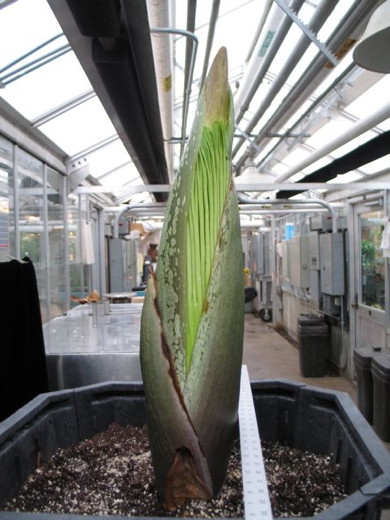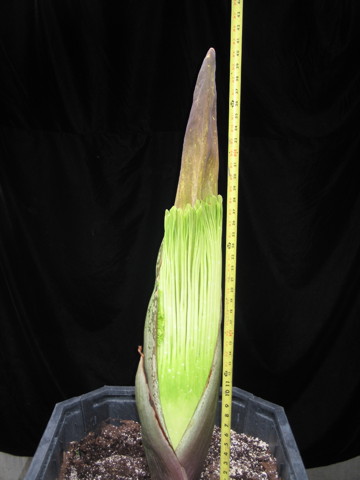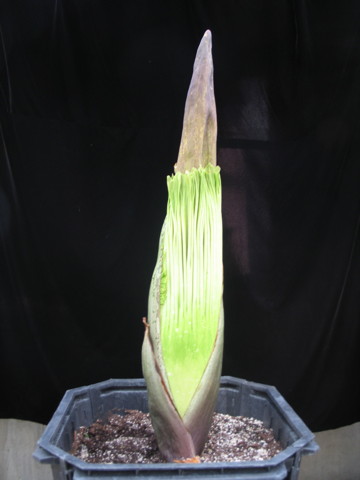The corpse flower fully bloomed the evening of Monday, August 19. To view the time-lapse video of the event, click on the video image below. Also click here to view more photos.
The corpse flower at UWRF bloomed August 19, 2013, less than 3 years since its first opening in October 2010.
Update, Monday August 19: The last sheath of the flower wilted on Sunday, August 18. A dark maroon color is developing on the spadix. The height of the flower is around 48 inches and has slowed its growth.
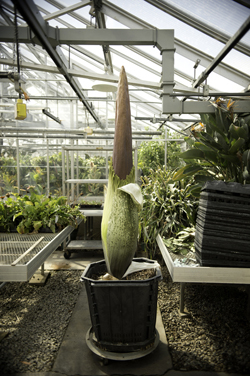
Update: August 17
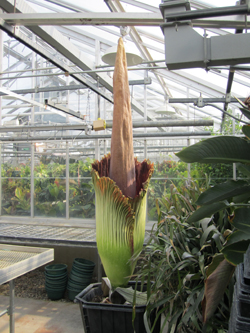
Update: August 19, 4:30 p.m.
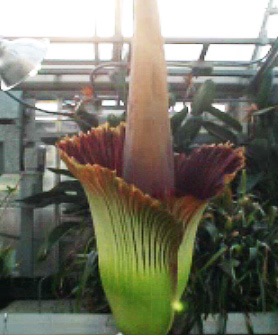
Update: August 19, 6:00 p.m. (From video screen capture)
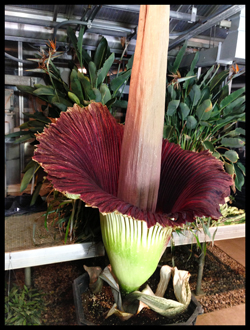
Update: August 19, around 8-9 p.m.






